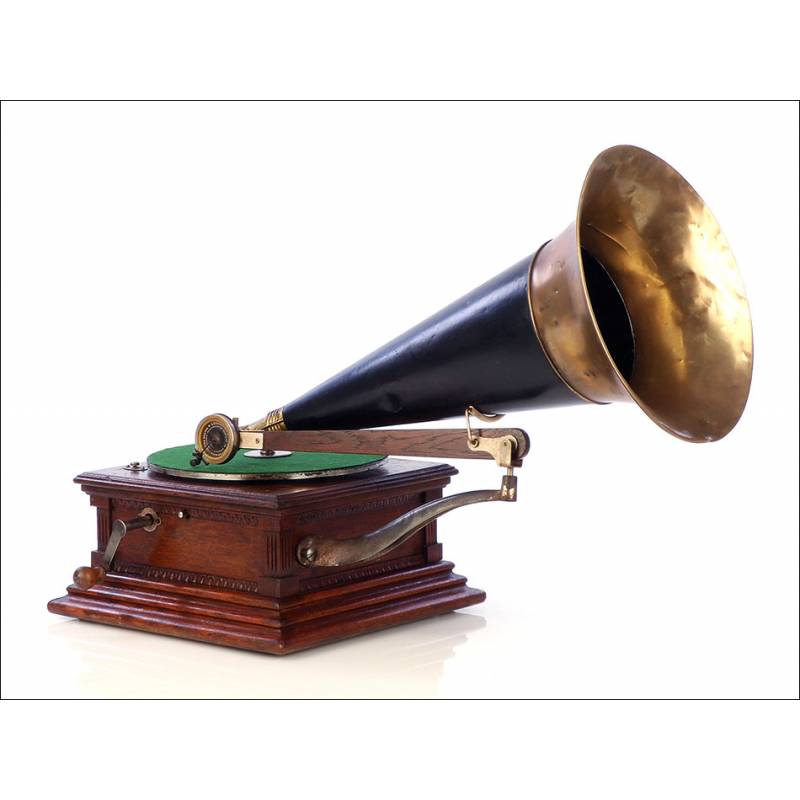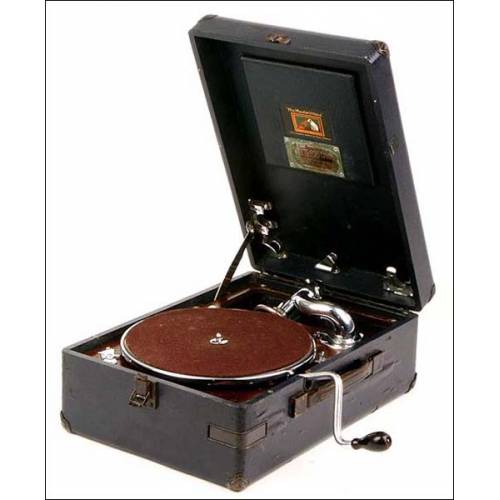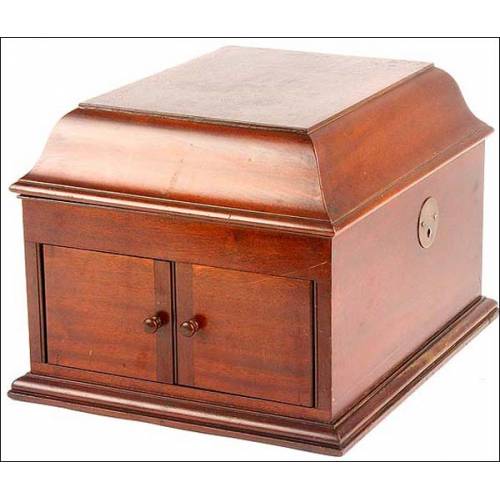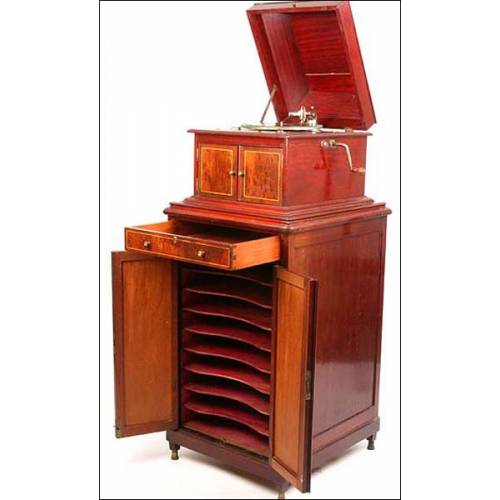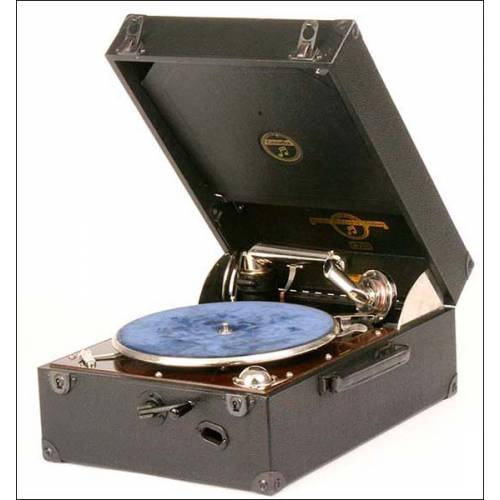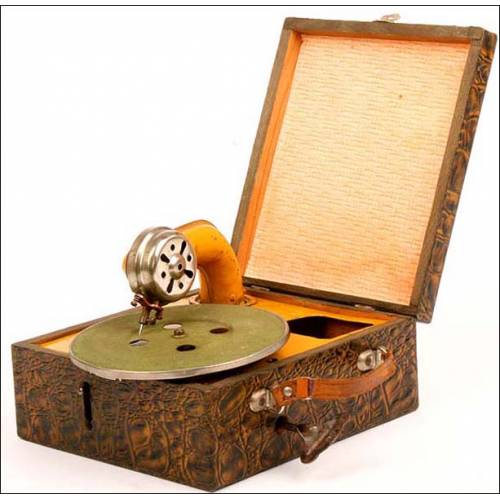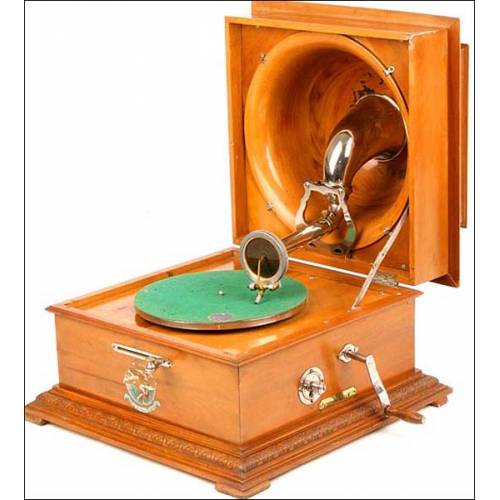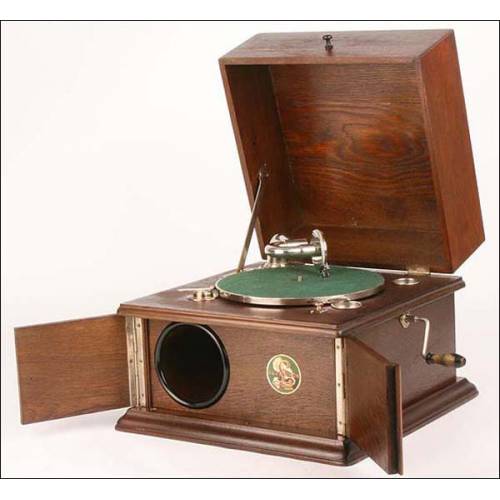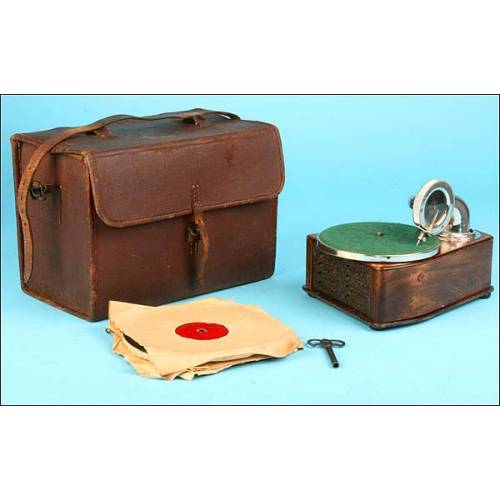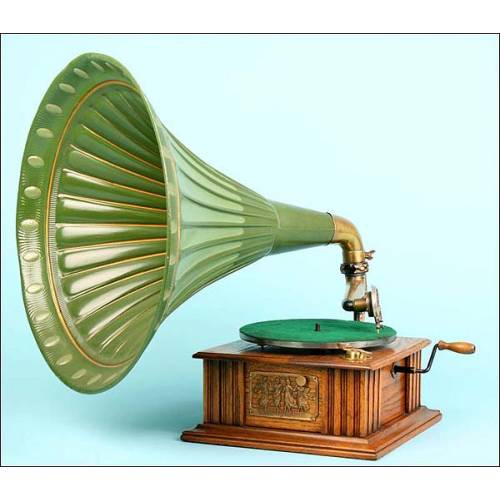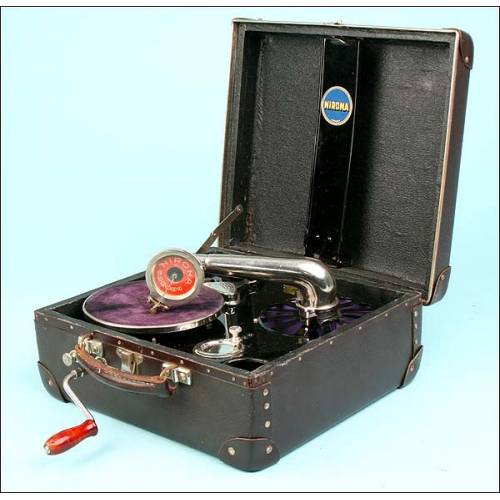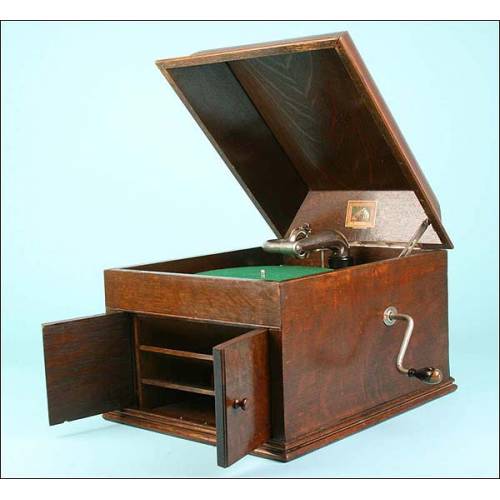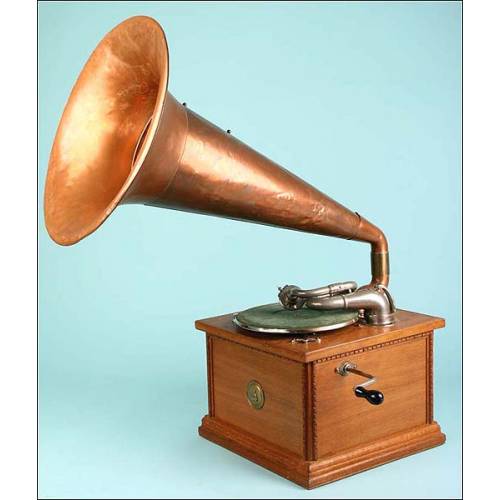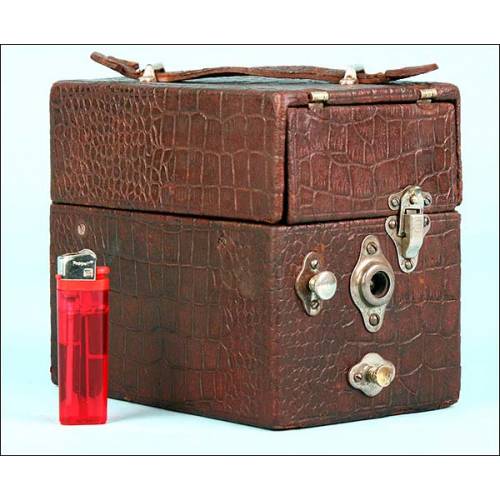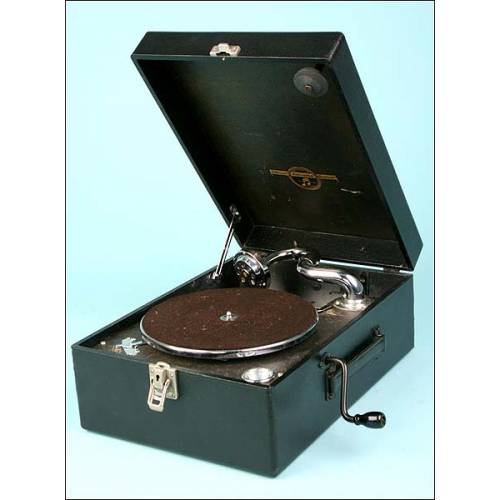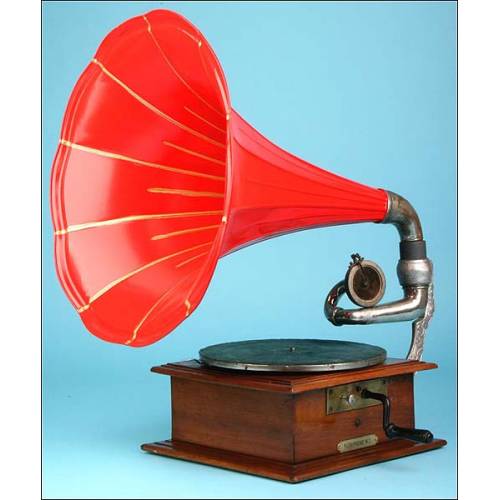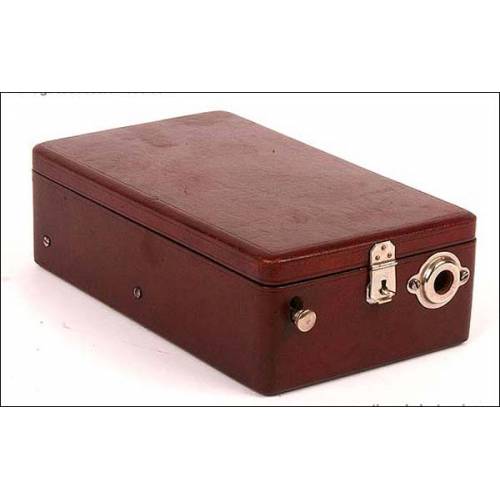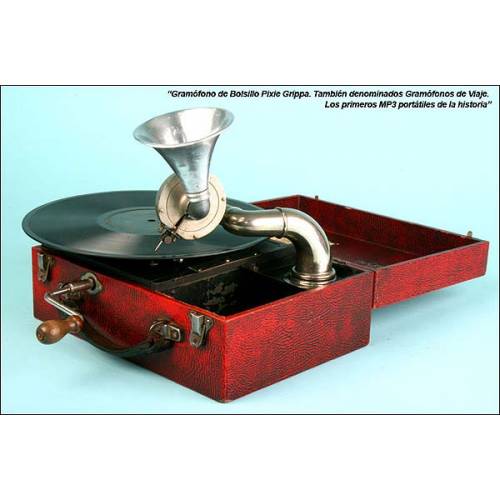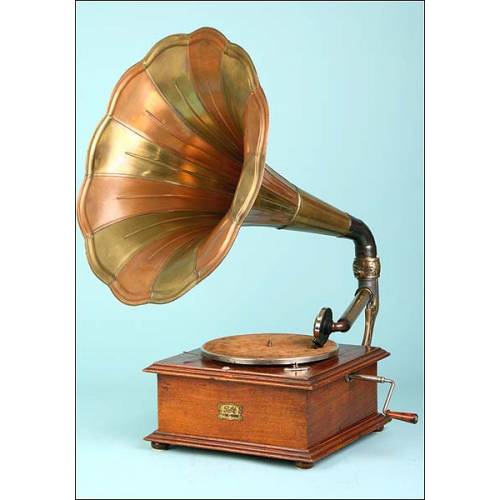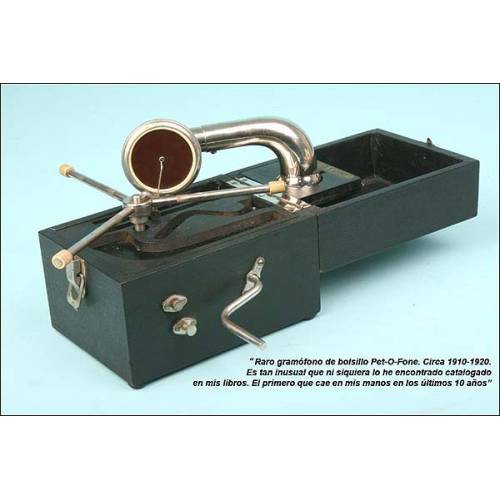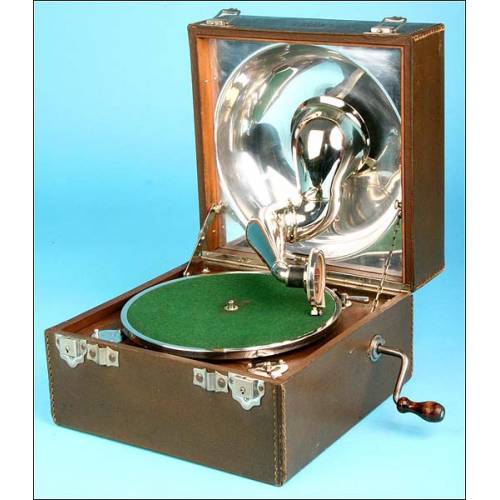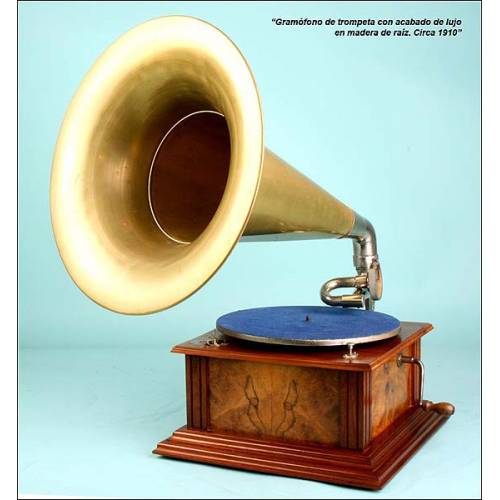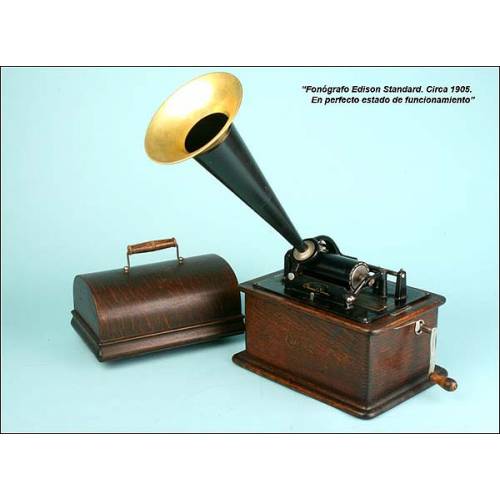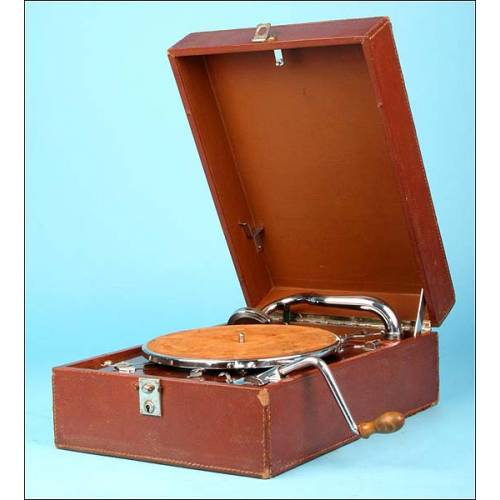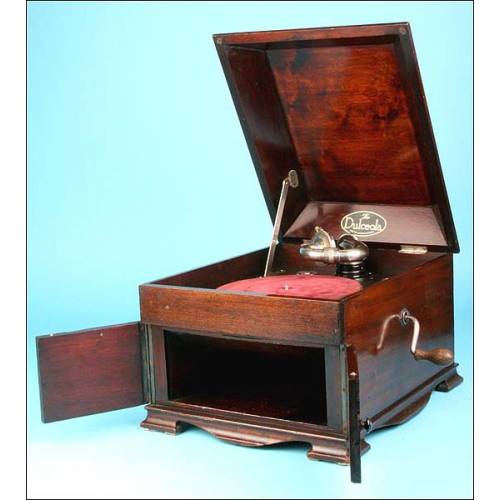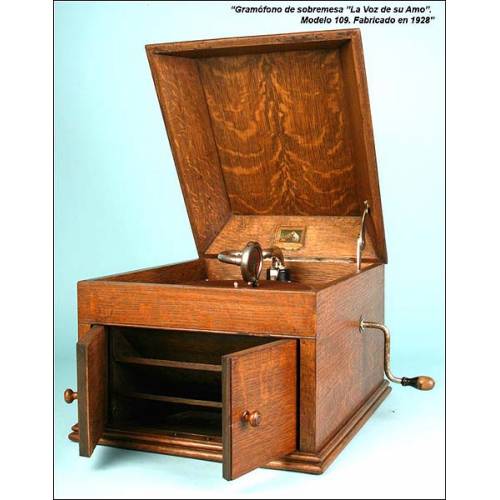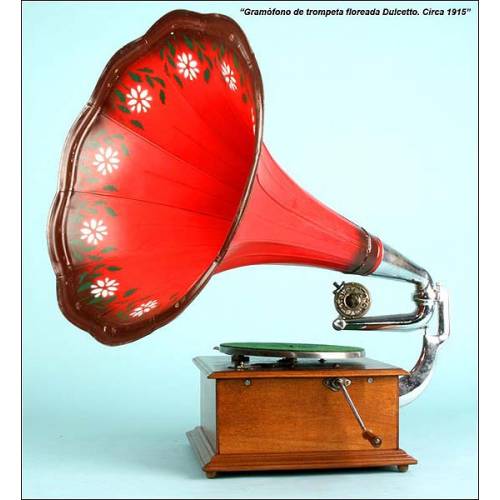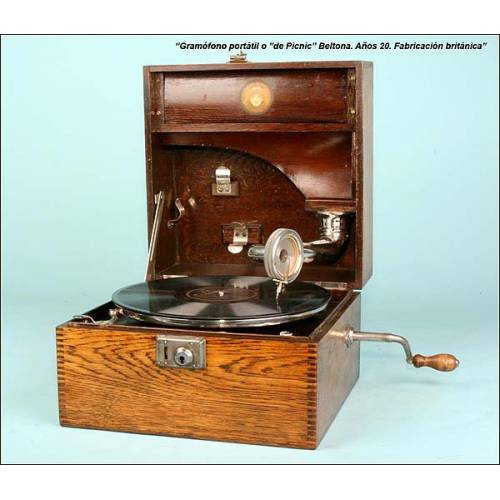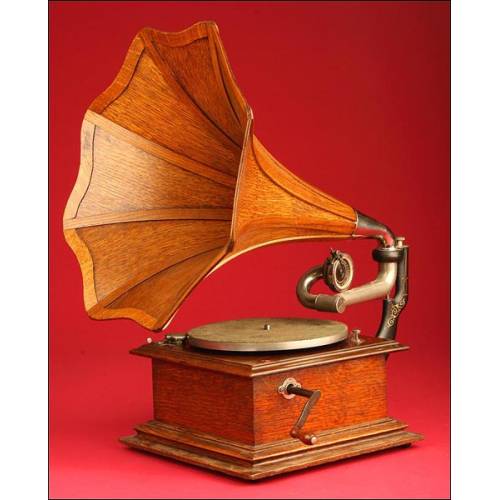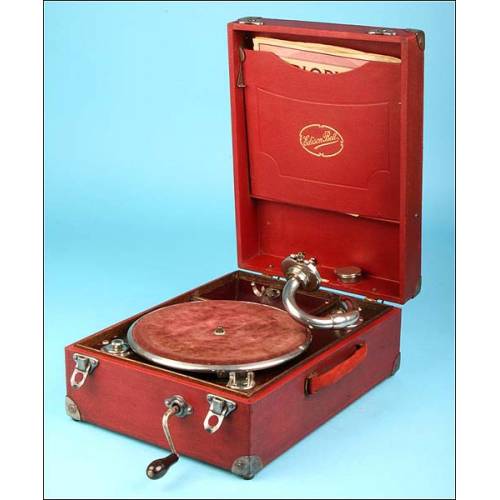C-913
Antique American Victor Monarch Pre-Dog Gramophone. USA, 1903
Magnificent antique Victor Monarch pre-dog gramophone with two springs motor and high power. Magnificent performance and beautiful sound.
Sold!
Antique American Victor Monarch pre-dog gramophone made in the USA in 1903 and in striking working order. The word pre-dog reveals that this gramophone was launched before the company started using the famous dog logo in the USA, Canada and Latin America. As well as providing a beautiful sound, the gramophone remains in wonderful condition. It mounts a bronze double-spring motor that makes it possible to enjoy a high-quality sound with a remarkable power. The motor has been thoroughly cleaned and overhauled to guarantee an excellent sound, worthy of such gorgeous device.The box is made of solid oak wood and is finely preserved too. It has a molded base, classic-style corner pillars and side carving details. All these elements have been carved by hand and are protected by a lovely French-polish finish that provides the wood with a deep warm glow. The gramophone is a front-mounting model; the reproducer is directly connected to the metal horn. The reproducer is also connected to a straight wooden arm, supported by a metal elbow that connects the set to one of the boxs sides. There is a metal plate with the gramophones and manufacturers names (VICTOR MADE BY VICTOR TALKING MACHINE CO) and the model and serial number (M 7678) riveted to the front side of the box. The horn is a metal piece with a simple straight design, similar to that of phonographs. It is made of black-painted metal sheet with brass mouth and elbow. Its amazing sound and imposing presence turn this antique American Victor Monarch pre-dog gramophone into a real collectors piece, full of beauty and with a true nostalgic charm. Measurements: Box: Side: 13.4 in / 33.5 cm. Height: 6.4 in / 16 cm. Horn: Length: 22 in / 55 cm. Mouths Width: 11,52 in / 28.8 cm.Victor Talking Machine Co. - History The Victor Talking Machine Company was founded in 1902 by Eldridge Johson, owner of a small machine shop in New Jersey (USA) after the proposal made by Emile Berliner to produce a low-cost spring motor to build a phonograph for his records. In the late 1880s, Berliner had invented a flat phonograph record that could be mass-produced. At the same time Edison had designed the cylinder phonograph, but the cylinders could not be mass-produced. After a complicated series of patent infringements and lawsuits, Berliner was restricted from selling his products in the USA so he moved to Canada. It was then when the Victor Talking Machine Company was founded; it was the beginning of a history of success. In 1906 the company launched the Victrola, a gramophone hidden into a piece of furniture which become a real success. During World War I the business declined but sales rose again after the content. In 1925 they produced the Ortohponic Victrola with an improved quality sound. At the late 1920s Johnson sold the company to RCA and it was renamed RCA-Victor.

